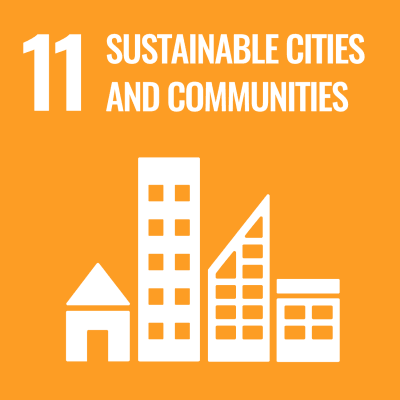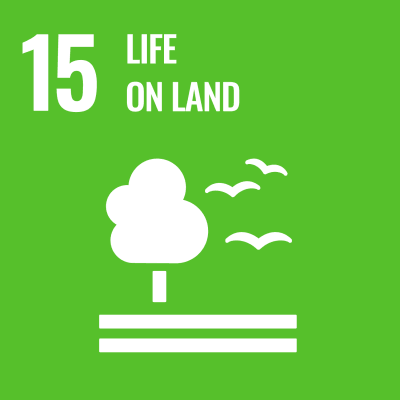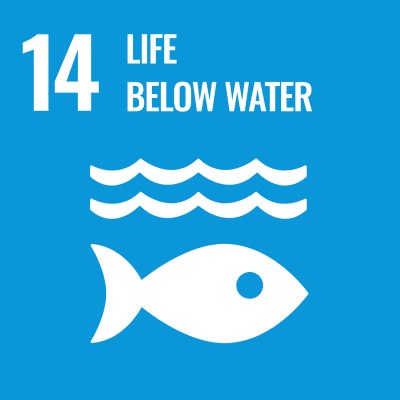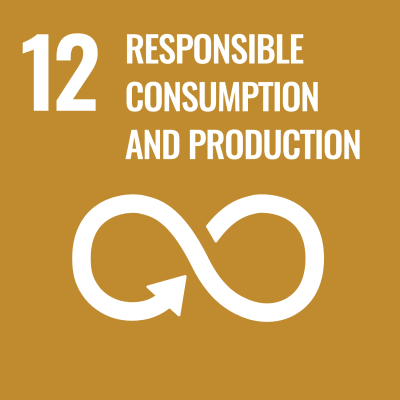-
Faculty of Biosphere - Geosphere Science, Department of Biosphere - Geosphere Science
- Professor
- Hiroyuki IKETANI
- Research Field
Taxonomy of cultivated plants, Horticulture
- Keyword(s)
Tree, Population Genetics, Cultivar
- Research theme
-
- Hybridization between wild and cultivated plants
- Population genetics of wild plants escaped from cultivation
- Genotyping of cultivars
- Nomenclature of cultivated plants
Outline of research activities


I study hybridization and introgression of wild and cultivated plants using molecular markers. Especially I analyze those the distinction of which from native plants are now difficult due to their naturalizaion in pre-modern times. I also study the distinction and origin of cultivars using molecular genotying. In addition, I study the problems in denomination and nomenclature of cultivated plants as a member of the Internationl Commission for the Nomenclature of Cultivated Plants.

Infrorescence of a tree cultivated as ‘Somei-yoshino’ at the Koshikawa Botanical Gardens, University of Tokyo. I demonstrated that this individual has different genotype from true ‘Somei-yoshino’, the clonallity of the latter cultivar is verified by molecular markers.- Desired cooperation
-
- Collection and investigation of crops and cultivated plants
- Conservation and management of wild genetic resources
- Development and utilization of traditional and/or novel crops and cultivated plants
-
Faculty of Biosphere - Geosphere Science, Department of Biosphere - Geosphere Science
- Professor
- Keiji NAKAMURA
- Research Field
Biology
- Keyword(s)
Insect, Life history, Seasonal adaptations
- Research theme
-
- Experimental analysis of insect life-cycle adaptations
- Analysis of environmental factors affecting animal life cycles
- Studies of of environmental effects on amphibian growth and development
Outline of research activities



Insects adapt to various terrestrial environments. In temperate regions, to survive cold temperatures in winter is essential for insects. Thus, many insects predict the arrival of period which is not suitable for development and reproduction, and change their physiological state. I am studying how insects regulate the life cycles in response to environmental signals, by field observations and rearing experiments.

- Desired cooperation
-
- Preservation of ecosystems
- Experimental analysis of pest's life cycle
- Effects of environmental changes on animal ecology
-
Faculty of Biosphere - Geosphere Science, Department of Biosphere - Geosphere Science
- Professor
- Naoto TOMIOKA
- Research Field
Environmental Archaeology, Palaeoecological anthropology
- Keyword(s)
Environment, Archaeology, Palaeoecology, Anthropology
- Research theme
-
- Identification and Analysis on Hard tissues from Archaeological Site
- Shell Growth Line Analysis
Outline of research activitiesIt is able to be defined that Archaeological Animal remains would be a mirror of their environment and subsistence including gathering, hunting and fishing, in these days.
Every animal remains from archaeological sites is suitable to environmental archaeology in this way so it would be required to identify accurately most of all animal remains from every site. Most frequent variety of sponsored research is to identify shellfish and shell growth line analysis. Recently we analyze the oxygen stable isotope ratio and the carbon stable isotope ratio about archaeological shellfish to study palaeoenvironment.- Desired cooperation
-
- Identification and Analysis on Hard tissues from Archaeological Site
- Shell Growth Line Analysis
-
Faculty of Biosphere - Geosphere Science, Department of Biosphere - Geosphere Science
- Professor
- Naoya FUKUDA
- Research Field
Astronomy, Astronomy Education, Data Visualization
- Keyword(s)
Astronomy Education, Stereoscopic system, MHD simulation
- Research theme
-
- Research of triggered star formation
- Desgin of a four-dimensional digital universe theater
- Optical and Infrared Astronomy, Radio Astronomy
Outline of research activitiesFormation of stars like the sun and planets like the earth is one of the important themes of astronomy. We study both theory and observation of star and planet formation. I investigate the star formation triggered by effects of OB stars.
Regarding the astronomy education, I managed the certificate of the astronomy guide at Okayama University of Science and the four-dimensional digital universe theater at Faculty of Biosphere-Geosphere Science.
- Desired cooperation
-
- Astronomy Education
- Stereoscopic system
-
Faculty of Biosphere - Geosphere Science, Department of Biosphere - Geosphere Science
- Professor
- Takeharu SATO
- Research Field
Disaster prevention meteorology
- Keyword(s)
Sediment disaster, Rainfall
- Research theme
-
- Development of landslide disaster prediction technology
- Development of risk evaluation technology of landslide disaster
Outline of research activities



We have to evaluate the occurrence prediction and disaster occurrence risk of landslides from inspection data. We analyze the trend of the past of the disaster, to assess whether the “when” “where” landslide disaster occurs, we are working to hazard maps.
These results are considered useful in a safe life.
- Desired cooperation
-
- Construction consultant
- Disaster-prevention measures
-
Faculty of Biosphere - Geosphere Science, Department of Biosphere - Geosphere Science
- Professor
- Tomohiro TAKEYAMA
- Research Field
Animal Ecology, Behavioral Ecology, Community Ecology
- Keyword(s)
Ecosystem, Biodiversity, Aquatic organism
- Research theme
-
- Behavioral Ecology in fish
- Food-web and Biodiversity in aquatic ecosystem
- Landscape Ecology and Landscape Genetics
Outline of research activities


I have interests in parental care and sexual conflicts over reproduction in teleost fishes. My goal is to understand social relationship among individuals by approaching the field researches and observations in lab conditions, from evorutionary views. In the resent years, I also conduct some field works to examine a composition of food-webs in aquatic ecosystem and evaluate the relationships between biodiversity of aquatic animals (e.g. dragonflies) and their local and landscape habitats.

- Desired cooperation
-
- Ecology and behavior in fish
- Evaluation and monitoring of biodiversity in aquatic ecosystem
- Reconstruction and conservation of aquatic ecosystem
-
Faculty of Biosphere - Geosphere Science, Department of Biosphere - Geosphere Science
- Professor
- Yousuke NOUMI
- Research Field
Geology,Geomorphology,Geoinformatics
- Keyword(s)
Granite,Rock Generation,Strata,Geomorphology,DEM,GIS
- Research theme
-
- Study on generation and emplacement of felsic magma such as granite
- Study on formation of strata and rocks distributed in Okayama Pref.
- Cultural geological study on various stone materials
Outline of research activities

Our laboratory conducts petrological research on granites widely distributed in southwestern Japan, using fieldwork as the main means of study. In addition to granite, we also reserch to tuffs and basic igneous rocks. Informatics technics, such as GIS are used in study. In addition, granite weathering, landform formation, stone material utilization, etc. are being studied.

- Desired cooperation
-
- Investigation and research on geology and topography in Okayama Prefecture
- Research on the use of GIS with a focus on topographical analysis
- Cultural geological research on stone materials
-
Faculty of Biosphere - Geosphere Science, Department of Biosphere - Geosphere Science
- Professor
- Yukitaka OHASHI
- Research Field
Local meteorology, Biometeorology, Urban meteorology, Atmospheric environment
- Keyword(s)
Local wind, Heat disorder, Urban heat island
- Research theme
-
- Formation mechanism of local wind such as a sea breeze; Numerical simulations and field observations of human heat stress map; and relationship between local climate and heat stress, crops, fruit growing.
Outline of research activitiesI study influences of meteorological and climatological conditions on human life and agriculture activities.
I am inerested in researches of local meteorology such as wind, temperature, and humidity, and biometeorology such as heat or cold stresses of human, animal, and plant.
My researches have been extended by using both a meteorological observation and numerical simulation for various regions in Japan.

- Desired cooperation
-
-
Faculty of Biosphere - Geosphere Science, Department of Biosphere - Geosphere Science
- Associate professor
- Hiroko UDAKA
- Research Field
Biology, Animal Physiology
- Keyword(s)
Life cycle, insects, slugs, distribution
- Research theme
-
- Seasonal adaptation in insects and slugs
- Cold tolerance in insects and slugs
- Citizen science
Outline of research activities


I am interested in the mechanisms of seasonal adaptation in insects and slugs. Through field collection and laboratory rearing, my research investigates how factors like photoperiod and temperature influence life history traits, their geographic variation, and the physiological mechanisms of cold tolerance. In recent years, I have also been involved in citizen science (project science) initiatives, including surveys on the distribution of newly introduced slug species.
- Desired cooperation
-
- Research on life history and thermal tolerance in insects
- Ecological and taxonomic studies of slug species
-
Faculty of Biosphere - Geosphere Science, Department of Biosphere - Geosphere Science
- Associate professor
- Mitsuhiko HONDA
- Research Field
Observational Astronomy, Planet Formation
- Keyword(s)
Protoplanetary disk, Instrument development
- Research theme
-
- Observation of protoplanetary disk
- Observation of Solar system minor bodies (comets)
- Development of new astronomical instrument and method
Outline of research activities


How the earth and planets are formed ?
I’m trying to answer this question by observing protoplanetary disks, which is the on-going planet forming site around young stars. Current large telescopes such as Subaru telescope allow us to reaveal the detailed signature of the planet formation process in the protoplanetary disks.
In addition, I’m also involved with the new development of the astronomical instrument and methed.
(Left) Artist’s illustration of the protoplanetary disk around HD142527 star
(Right) Detection of olivine and pyroxene crystals around Hen3-600A star- Desired cooperation
-
- Research on planet formation
- Research on Solar system minor bodies
- Development of new astronomical instrument and method
-
Faculty of Biosphere - Geosphere Science, Department of Biosphere - Geosphere Science
- Associate professor
- Noriko KIDERA
- Research Field
Animal Ecology, Ethology, Conservation Ecology
- Keyword(s)
Wetland, Amphibians, Reptiles, Islands
- Research theme
-
- Ecology and ethology of amphibians and reptiles
- Evolutionary ecology of marine reptiles
- Assessment of anthropogenic impact on rice field ecosystems
Outline of research activities



How can the population sustain in wetlands where the environment spatially and temporally fluctuates? We study the ecology of amphibians and reptiles in wetlands as target areas. Also, we study the anthropogenic impacts, such as paddy improvement and abandonment, on those populations from the viewpoint of conservation biology as well as ecology and evolution.

- Desired cooperation
-
- Molecular biology
- Long-term monitoring of wetland species
-
Faculty of Biosphere - Geosphere Science, Department of Biosphere - Geosphere Science
- Associate professor
- Okihito YANO
- Research Field
Systematic Botany
- Keyword(s)
Phylogeny, Cytology,Taxonomy, Flowering Plants, Cyperaceaea
- Research theme
-
- Taxonomy of Cyperaceae
- Phylogeny of Cyperaceae
- Cytology of Cyperaceae
Outline of research activities
My research is focused on the diversification and evolution of flowering plants, mainly Cyperaceae (sedges family), ranged from Japan to the Himalayas through China. Cyperaceae is one of the most diversified group in flowering plants, and is suitable for studies of plant systematic and evolution. I have conducted taxonomic, phylogenetic and cytological studies of Cyperaceae.
- Desired cooperation
-
- Taxonomy
- Phylogeny
-
Faculty of Biosphere - Geosphere Science, Department of Biosphere - Geosphere Science
- Associate professor
- Shinji MIYAMOTO
- Research Field
Geography, Environmental Archaeology, Environmental History
- Keyword(s)
Disasters, Land Development History, Archaeological Site Location, Geomorphic Environmental Transition
- Research theme
-
- Elucidation of human responses to changes in the natural environment
- An Examination of the History of Land Development in the Asian Monsoon Region
- Analysis of Site Location Environment
- Comparative Study of Disaster Response in the Asian Monsoon Region
Outline of research activities

Based on fieldwork in flood zones from the Himalayan highlands above 4,000 meters to the zero-meter flood zones, we are trying to elucidate the actual disaster conditions and land development processes in each region. In contrasting between regions, we emphasize primary data and attempt to relativize the issues.

- Desired cooperation
-
- Disaster Prevention Mapping
- Support for disaster prevention activities, etc.
-
Faculty of Biosphere - Geosphere Science, Department of Biosphere - Geosphere Science
- Lecturer
- Azusa SHITO
- Research Field
Seismology, Geophysics
- Keyword(s)
Seismic Wave, Earth's Interior, Tomography, Oceanic lithosphere, Inland Crust
- Research theme
-
- Seismic structure, origin, and evolution process of the Oceanic lithosphere
- Seismic wave velocity and attenuation tomography
Outline of research activities
The radius of Earth is 6371 km, whereas the deepest borehole ever drilled reached only 12 km (0.2% of Earth radius) into Earth. It can be said that Earth’s deep interior is the place further than the universe. We analyze the seismic wave and explore the deep interior of the earth which can’t be seen directly. By analyzing propagation of the seismic wave, we investigate the temperature and the existence of magma and/or fluid, and we consider the dynamics of the Earth.

- Desired cooperation
-
- Seismic structure of the incoming oceanic plate and subduction zone earthquake
- Deep structure of the active volcano
-
Faculty of Biosphere - Geosphere Science, Department of Biosphere - Geosphere Science
- Lecturer
- Hyewon HONG
- Research Field
Archaeology, East Asian Archaeology, Public Archaeology
- Keyword(s)
Stone tools, Usewear Analysis, Utilization of Archaeological sites
- Research theme
-
- The beginning of the Upper Paleolithic age.
- Traces and function of stone tools.
Outline of research activitiesThe Upper Paleolithic age of the Japanese archipelago is represented as blade based industries, and there are close relationships between blade production techniques and the beginning of the Upper Paleolithic age. Furthermore, the “knife-shaped tool” is one of the typical formal tool types of the blade industry in the Japanese archipelago. For the Initial Upper Paleolithic period when the blade technology was not yet fully established, a set of technique was also confirmed which utilized flakes and vertical elongated flakes. Although various chronological hypotheses of the EUP were so far presented, they have not been unified yet.
I rethink the Early Upper Paleolithic industries in the Japanese Archipelago and East Asia throught the method of Usewear analysis and Traceology.- Desired cooperation
-
- Paleoanthropological research.
- Cognitive Archaeology ans Psychology.
- Paleoenvironment research.
-
Faculty of Biosphere - Geosphere Science, Department of Biosphere - Geosphere Science
- Assistant professor
- Shintaro UENO
- Research Field
Animal Ecology, Animal Ethology
- Keyword(s)
Freshwater turtle, Sea turtle, Aquatic life, Biodiversity, Conservation
- Research theme
-
- Natural history study on animals, especially turtles
- Elucidation of factors affecting the distribution and species compostion of aquatic life.
- Reproductive isolation mechanisms of turtles
Outline of research activities



We study the natural history of wild animals using ecological and ethological methods. In particular, we study the distribution, diet, and behaviour of freshwater turtles and sea turtles, to understand their lifestyle and to study how human activities affect their lives. Additionally, we are conducting researches to elucidate the mechanisms of reproductive isolation in turtles, where interspecific hybridization is common. We are also interested in the distribution and population structure of aquatic species such as the giant salamander and the finless porpoise.

- Desired cooperation
-
- Conservation of aquatic life
- Biodiversity of aquatic life
- Sustainable use of the environment and resources









